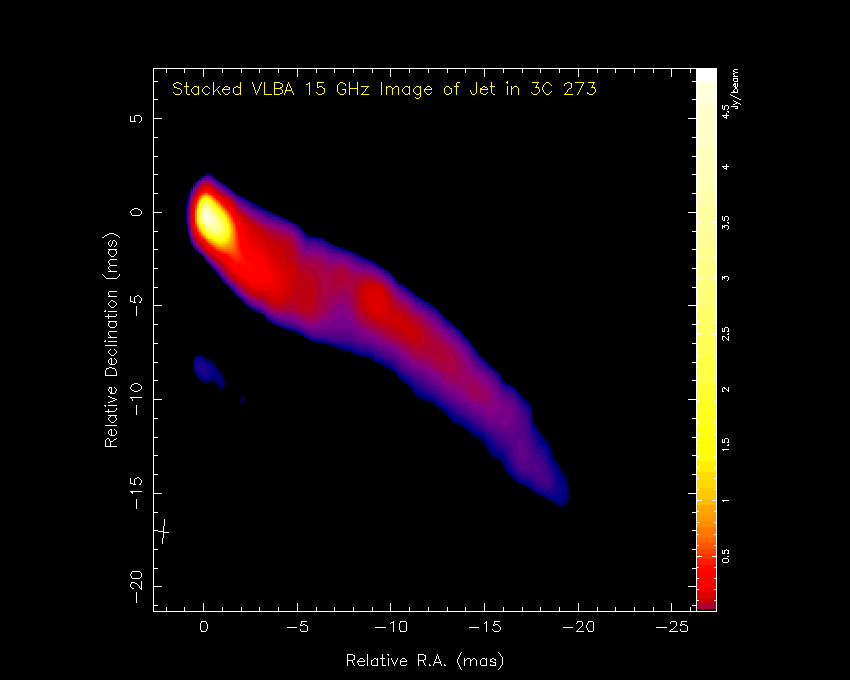M. Lister Research Group
- Purdue Physics and Astronomy
 Stacked-Epoch VLBA Image of Quasar 3C273 |
Research
Areas
|
|
Observing Facilities
|
Radio Interferometry
|
Recent Group NewsAugust 2022: Professor Lister has left Purdue University to take up a new position at MathWorks Inc., in Natick, MA. The new contact for the MOJAVE program is Yuri Kovalev of the Astro Space Center and Moscow Institute of Physics and Technology.February 2022: MOJAVE Observations of a Supermassive Binary Black Hole Candidate : VLBA images from the MOJAVE program have played an important role in the interpretation of the sinusoidally-varying radio emitting AGN PKS 2131-031. The latter has been identifed as a binary supermassive black hole system in a paper in the Astrophysical Journal. August 2021: The MOJAVE team has published a new paper analyzing the kinematics of 447 blazar jets in the Astrophysical Journal (Lister et al. 2021). A majority of the jets show features with accelerating motions, and roughly 10% show slow-moving/stationary features that are likely standing shocks in the flow. Most jets also show variations of 10 to 50 degrees in their inner jet position angles over time, with some having extreme variations up to 200 degrees. In some cases the position angle evolution is oscillatory, indicative of wobbling flow instabilities near the jet base. Those jets with smaller jet position angle variations (including blazars not detected in gamma-rays by the Fermi observatory) are likely viewed at larger angles from the line of sight. June 2021: The MOJAVE program has been approved with 'A' queue priority to continue monthly 15 GHz VLBA observations until August 2024. In each 24 hour segment we will observe 40 targets from a pool of 68 AGN jets exhibiting accelerating features and/or swinging nozzles, and 147 AGN from the MOJAVE 1.5 Jy Quarter Century sample that are in the IceCube northern sky footprint. We are also pleased to announce a new data sharing agreement with the IceCube collaboration to investigate potential sources of extragalactic high energy neutrinos. August 2020: https://www.nasa.gov/feature/goddard/2020/nasa-missions-explore-a-tie-fighter-active-galaxy : Members of the MOJAVE team and Aneta Siemiginowska of the Chandra X-ray Center have used observations from the VLBA, Fermi and Chandra to study a young gamma-ray emitting AGN with an unusual shape caused by intermittent jets that are creating lobes of expanding plasma. The study has been published in the Astrophysical Journal. . July 2019: M. Lister has received a large NASA Fermi Guest Investigator grant to support research activities associated with the MOJAVE program . May 2019: The MOJAVE program has been approved with highest priority ranking for monthly VLBA observations at 43 GHz, and once every two month observations at 15 GHz, through August 2021. February 2019: Mary Ann Hodge successfully defended her Ph.D. thesis "Linear Polarization of AGN Jets". Her research results have been published in two papers in the Astrophysical Journal: Hodge et al. 2018 and Lister et al. 2018. |